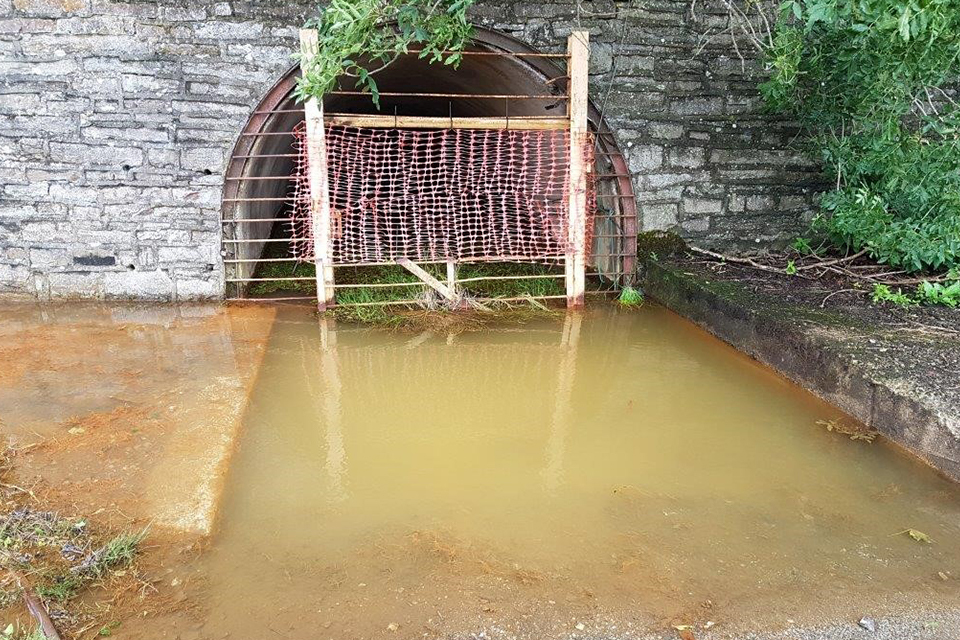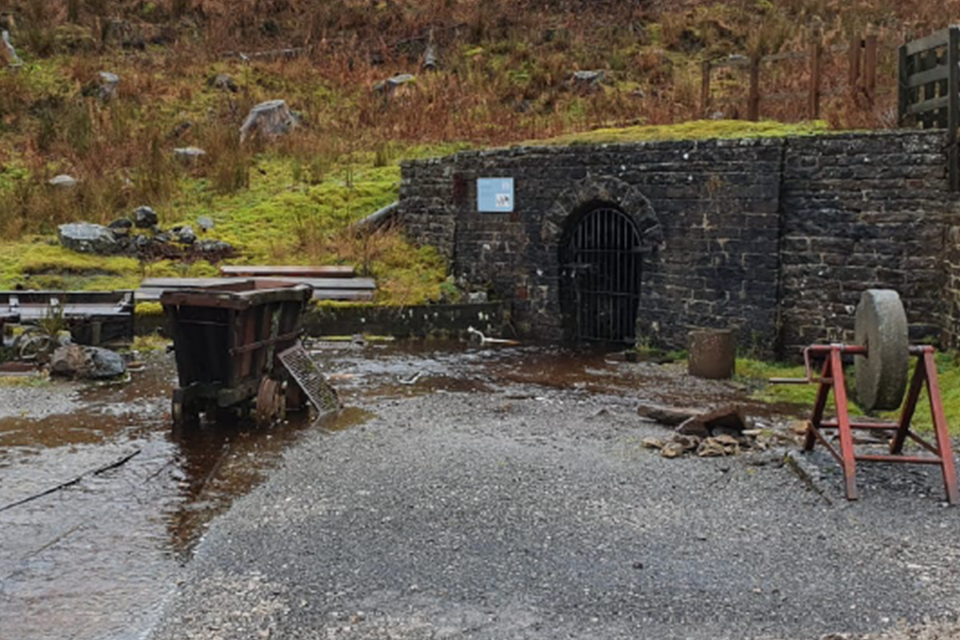River Wear catchment metal mine water pollution investigations
Updated 10 January 2023
Applies to England
1. Cambokeels mine water
The Cambokeels mine is on the north bank of the River Wear, between Eastgate and Westgate. From the mid-19th Century until 1989, fluorspar, lead and zinc were mined from the Slitt Vein.
When the mine was operating, groundwater was pumped out to keep the working area dry. After the mine closed, the pumps were switched off and so groundwater now drains out of the mine through a tunnel that was dug in the 1970s.
This mine water contains metals including cadmium, zinc and iron which pollute up to 16km of the River Wear. Unless action is taken, this pollution will continue for hundreds of years.
Our investigations are currently focussed on 2 issues:
1.1 Treatment trials to identify the most cost-effective way to remove the metals
We are testing several different materials which can capture metals. Some of the mine water is being piped into tanks so we can measure how much of the metals are removed by these “treatment media”. We started operating these trials in late 2020 and will continue throughout 2023. The results will allow us to decide which “treatment media” should be used at full-scale.
1.2 Keeping clean water out of the mine workings
We have discovered that some small streams are leaking into the mine which means that more water has to be treated. We have repaired one old culvert in June 2021 and since then we have been investigating if water from other sources could be kept out of the mine. If successful, the full-scale mine water treatment scheme may be smaller in size and cost less to build and operate.

The Cambokeels mine water discharge
2. Rookhope Burn
The Frazer’s Grove fluorspar mine is located to the north of Rookhope village. It was the last working deep mine in the North Pennines when it closed in 1999, after extracting fluorspar, zinc and lead since the early 19th Century.
After the mine closed and the pumps were switched off, mine water discharged from the Tailrace Level, an old drainage tunnel. This mine water contains metals including cadmium, zinc and iron which pollute up to 35km of the Rookhope Burn and River Wear. Unless action is taken, this pollution will continue for hundreds of years.
Contaminated mine wastes have been deposited in many places across the Rookhope catchment and can also pollute the river.
We are continuing to measure the amount of metals in the mine water and in the river so that we can determine the best way to control this pollution.

Mine water discharging from the Tailrace Level into Rookhope Burn

The headworks at the former Frazer's Grove mine
3. Killhope Burn
Metals impacting Killhope burn come from two mine water discharges and several areas of contaminated mine wastes. Unless action is taken, this pollution will continue for hundreds of years.
The Park Level was dug in the mid-19th Century to drain what is now the Killhope Lead Mining Museum.

The Park Level mine water discharge at Killhope
We are continuing to monitor the flow rates and chemistry of this mine water so that we can investigate options for a treatment scheme. During 2023, we will also be investigating whether we can keep clean water out of the mine workings as this would mean less mine water needs to be treated and so any full-scale mine water treatment scheme may be smaller and cost less to build and operate.
During 2020, we worked with the Wear Rivers Trust to install measures to limit erosion of metal contaminated material on the river bank near the mining museum. More information is available here.
Another important source of metals is the Sedling Burn which joins Killhope Burn at Cowshill. Mining for metals is first reported in the 15th Century and continued until the 1980s. We have previously monitored the Burtree Pasture mine water and inputs of metals from mine wastes in this catchment but we are not currently working in this sub-catchment.
4. Sharnberry mine
The Sharnberry mine was worked for lead and fluorspar from the early 19th Century until closing in 1982. It is located to the west of Hamsterley Forest.
Up to 15km of the Euden Beck and Bedburn Beck are polluted with cadmium, zinc and lead. Mine water draining from the former workings is the main cause of pollution although metal-contaminated wastes also contribute.
We are continuing to monitor the flow rates and chemistry of the mine water and the river to help us develop options to clean up the pollution.
We are also investigating the impact of the metals on fish and river-flies in the river and exploring whether we can keep clean water out of the mine workings as this would mean less mine water needs to be treated and so any full-scale mine water treatment scheme may be smaller and cost less to build and operate.

Sharnberry mine water
5. Middlehope Burn
Middlehope Burn is polluted by cadmium, lead and zinc from abandoned mines. There were several mines in this catchment which cause pollution through mine water drainage and erosion of metal-contaminated wastes. Wear Rivers Trust has installed a series of “green engineering” measures across the catchment including bank repairs using logs or stone walls and leaky dams which capture contaminated sediments. More information is available at Diffuse Metals.
Read more about the work of the Water and Abandoned Metal Mines programme
